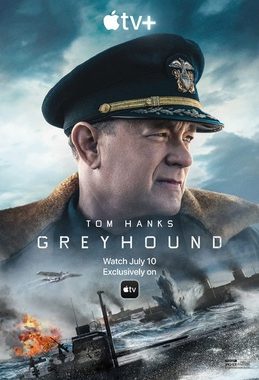The new Tom Hanks movie, “Greyhound,” shines a light on one of the most consequential, yet largely overlooked conflicts of World War II – the Battle of the Atlantic. It was by far the longest continuous combat action of the war, beginning on Sept. 3, 1939, and ending May 8, 1945, the same day Germany surrendered.
Scholars have called the early months of WWII the “Phony War.” England and France had pledged to defend Poland, but took no action when Germany attacked and defeated the Poles in September, 1939. Although the British and French declared war on Germany September 3, both sides avoided major combat actions on the ground or in the air for the eight months following the fall of Poland.
But there was nothing phony about the war being waged in the Atlantic Ocean during that same period. Readers of this blog know the first shot fired in the Battle of the Atlantic was the torpedo that struck the British passenger ship Athenia less than nine hours after Britain and Germany declared war.
The battle was fought over shipping tonnage. Following the fall of France in June, 1940, the British were left to fight on alone against the Nazis. An island nation, Great Britain required a million tons of food and supplies every week in order to sustain its citizens and its war effort. German naval and air forces set out to interrupt that flow of supplies, and by the end of September they had sunk nearly 40 British merchant ships.
Clearly, such losses would be unsustainable over any length of time. For this reason, British Prime Minister Winston Churchill, writing later in his history of the war, said the only thing that frightened him during the war was “the U-boat peril.”
In coming months we will explore more about the Battle of the Atlantic, from the convoy system to U-boat wolfpacks, and the back-and-forth evolution of technology and tactics as both sides sought advantage on this expansive “battleground.”.


